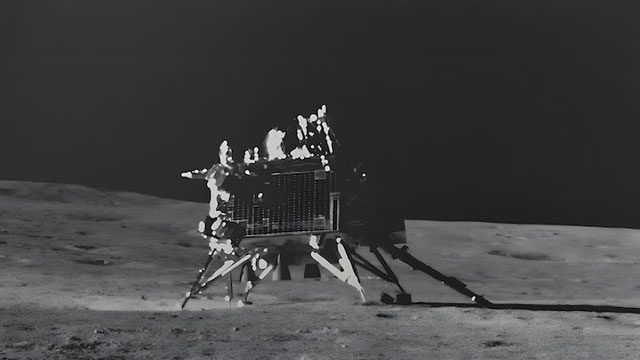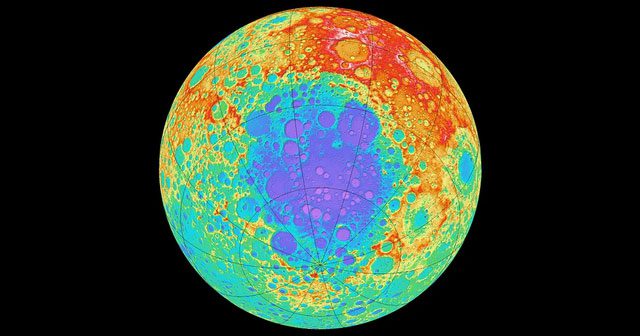Unexplained Sounds Recorded by the Indian Lunar Seismic Activity Measurement Device (ILSA) on the Vikram Lander.
India’s Chandrayaan-3 Mission may have just captured the first seismic data on the Moon since the 1970s. If confirmed as natural seismic data, it could help scientists understand the internal structure of this celestial body.
According to reports, significant sounds were recorded by the Lunar Seismic Activity Measurement Device (ILSA) on the Vikram lander. This device, based on Micro-Electro-Mechanical Systems (MEMS) technology, is the first of its kind deployed on the Moon and can record seismic sounds as the Pragyan rover moves across the surface.
However, this device may also capture sounds generated by natural events, such as an earthquake or an impact.
“The primary objective of ILSA is to measure ground vibrations caused by earthquakes, impacts, or artificial events. The vibrations were recorded during the navigation of the probe on August 25, 2023,” stated the Indian Space Research Organisation (ISRO).
“Additionally, an event seemingly originating from natural causes was also recorded on August 26, 2023, and its source is currently under investigation.”

India’s Vikram Lander on the surface at the Moon’s South Pole. (Photo: Internet).
So far, the best seismic data we have about the Moon comes from the Apollo program, which took place in the late 1960s and 1970s.
Scientists are eager to conduct more detailed studies, especially as we still do not understand how the crust and core of the Moon are arranged.
Typically, seismic data needs to be collected over a long period to answer this mystery. Although it has only been a few weeks since the ISRO mission landed on the Moon, it has conducted a series of scientific observations and discovered the first elements at the Moon’s South Pole.
Currently, both the lander and the rover are in “sleep” mode, as both devices are located in the dark part of the Moon, which does not receive sunlight for about 14 days.
Vikram and Pragyan, like previous lunar missions, use solar power, meaning they will “sleep” at night when their batteries cannot be recharged. However, Vikram and Pragyan are set to wake up on September 22, when they will begin their exploration of the Moon’s mysterious South Pole.
There Is Still Much to Explore Beneath the Moon’s Surface
Of course, India’s exploration missions, or those from any other country, still have much to discover, especially since the Moon’s South Pole contains one of the largest impact craters in the Solar System. Known as the South Pole–Aitken Basin, it has a diameter of 2,500 km and a depth between 6.2 and 8.2 km, located on the far side of the Moon.
The South Pole–Aitken Basin can be used to understand the Moon’s internal composition as well as to study its history. It is also the best “laboratory” to examine how catastrophic impacts on the surface of a rocky planet might occur.
In fact, the South Pole–Aitken Basin has attracted researchers’ attention due to an anomalous “object” hidden beneath its surface, first discovered by scientists in 2019.

The metal mass hidden beneath the largest impact crater in the Solar System, the South Pole–Aitken Basin of the Moon (in dark blue). (Photo: NASA).
Specifically, planetary scientists discovered a structure weighing approximately 2.18 trillion kilograms and extending more than 300 km (186 miles) deep. To put this into perspective, this metal mass is five times larger than the Big Island of Hawaii. Researchers suspect that the South Pole–Aitken Basin may contain metals from a meteorite that collided with the Moon’s surface, forming the impact crater.
It is known that researchers used data from NASA’s GRAIL mission spacecraft, which aimed to measure even the slightest changes in the Moon’s gravitational field. These observations can be used to study the internal composition of our natural satellite. It turns out the mass they measured is significant enough to pull the entire floor of the massive crater, which has a diameter of about 2,500 km, down nearly a kilometer (over half a mile).
The research team also ran computer simulations to explain this anomaly. They do not rule out the possibility that when the meteorite impacted the Moon about 4 billion years ago, it remained in the mantle rather than sinking into the core. Another explanation focuses on the solidification of the Moon, suggesting that a dense concentration of oxides may have formed as the magma ocean cooled and settled.
However, the South Pole–Aitken Basin is not the only part of the Moon that hides gigantic structures of curiosity beneath its surface. Astronomers announced the discovery of a massive thermal anomaly beneath the Compton and Belkovich craters on the far side of the Moon last month.


















































